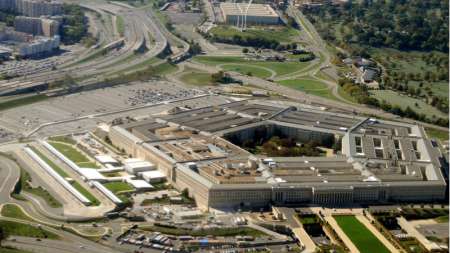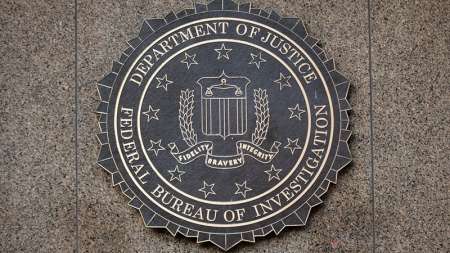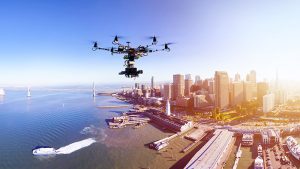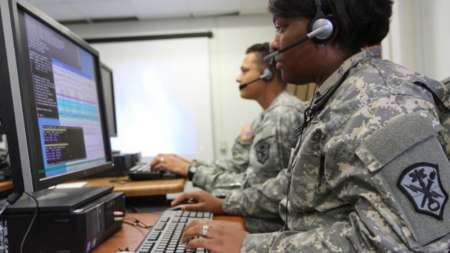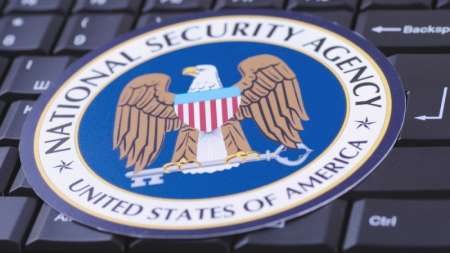The U.S. Army is requesting information on contractors that can provide nationwide web-based public data services for the U.S. Army Criminal Investigation Division Command (USACIDC). […]
With the increasing ubiquity of internet of things (IoT) devices and the vast expansion of the cyber attack surface that those devices create, National Security Agency (NSA) IoT Enterprise Functional Team Lead Arlene Santos is emphasizing the importance of the IoT Cybersecurity Improvement Act reintroduced in Congress last month as way to address the cybersecurity concerns posed by rapid IoT device growth. […]
The U.S. Air Force announced it will add a chief technology officer to help coordinate technical decisions and convert investments into capabilities as part of the service branch’s larger Science and Technology Strategy released Wednesday, April 17. […]
The Intelligence Advanced Research Projects Activity (IARPA) office released a draft solicitation for innovative solutions for automated broad-area search, monitoring, and analysis of anthropogenic activities – those related to human activity – within its Space-based Machine Automated Recognition Technique (SMART) program. […]
The Pentagon’s top research arm is working to build a hack-proof voting machine by combining something brand new with something old – specifically, secure open-source hardware and software using advanced cryptography on one end, and good old paper on the other. […]
Vector Launch, Virgin Orbit, and VOX Space are the Defense Advanced Research Project Agency’s (DARPA) qualifying competitors for the Launch Challenge, which aims to enable the military to launch on-demand small payloads into space. DARPA awarded $400,000 to each competitor that completed the qualification phase, and now the competitors will attempt to launch to low-Earth […]
The Department of Homeland Security (DHS) and the Federal Bureau of Investigation (FBI) released a Malware Analysis Report (MAR) on Wednesday warning industry about cyberattacks from the Lazarus Group, which is widely believed to be backed by the North Korean government. […]
The Department of Defense has narrowed the competition for its $10 billion, Joint Enterprise Defense Infrastructure (JEDI) contract to a choice between Amazon Web Services and Microsoft, according to a DoD spokesperson. […]
The U.S. Army is partnering with the Air Force to use the Common Cloud Environment as part of the Army’s Cloud Strategic Framework, said Thomas Sasala, the Army’s chief data officer, on April 9. […]
Testifying today in front of the Senate Armed Services Committee which is reviewing the Navy’s FY2020 Defense Authorization Request, Navy Secretary Richard Spencer said the service branch is sending a proposition up to Congress to add a fifth assistant secretary to address cyber needs. […]
The Defense Advanced Research Projects Agency (DARPA) will host its second annual Electronics Resurgence Initiative (ERI) summit in Detroit, July 15–17. ERI – a five-year, upwards of $1.5 billion investment to develop a specialized, secure, and automated electronics industry – has created collaborations among the defense industrial base, private electronics sectors, and academic researchers. DARPA […]
The Defense Information Systems Agency (DISA) gave a 12-month provisional authorization to the Project Host Federal Private Cloud (PJHFPC) on April 1. PJHFPC is a platform as a service private cloud that hosts Impact Level 5 (IL5) controlled unclassified information data, and it has systems and services that manage access control, authentication, auditing, monitoring, scanning, […]
In a partnership with U.S. Air Force (USAF) Life Cycle Management Center (AFLCMC), a Raytheon-led consortium is working to modernize a space debris tracking and monitoring system formally known as Space Defense Operations Center (SPADOC). […]
While some may question the rationale behind indicting people in countries that are unlikely to extradite to the U.S., the Federal Bureau of Investigations (FBI) sees value in the activity as one aspect in a national strategy of deterrence, said Tonya Ugoretz, deputy assistant director in the Cyber Division of the FBI. […]
Sens. Marco Rubio, R-Fla., and Chris Van Hollen, D-Md., on April 3 introduced an updated version of their Defending Elections from Threats by Establishing Redlines Act (DETER Act), which they said promises “swift and severe consequences” to Russia and other “foreign actors” if they attack U.S. political candidates, campaigns, or voting infrastructure. […]
The Defense Advanced Research Projects Agency (DARPA) will begin accepting proposals for its fourth swarm sprint in its OFFensive Swarm-Enabled Tactics (OFFSET) program, according to an April 1 news release. […]
Data alone isn’t the new bacon. Data fusion is the new bacon, and data exploitation is the new gold. […]
Defense Department (DoD) officials today underscored the importance of the agency’s ongoing electronic health records (EHR) modernization efforts at a Senate Appropriations Committee Defense Subcommittee hearing on the Defense Health Program FY2020 budget request. […]
One of the major wrinkles to iron out in the Federal government’s move to the cloud has been security. Concerns regarding security have prompted some agencies to move cautiously, and the government to create whole programs dedicated to ensuring it. But cloud also provides some security advantages, which the Department of Defense (DoD) is taking advantage of to provide services to warfighters and small-business contractors. […]
Army lieutenant generals told the Senate Armed Services Airland Subcommittee that the Army Futures Command (AFC) has reallocated over $30 billion to the service branch’s modernization efforts since its establishment last summer, in a hearing today. […]
The U.S. Army and Air Force Secretaries and Chiefs of Staff justified the Trump administration’s proposed FY2020 Defense budget before the House Armed Services Committee today by pedestalling the urgency of modernizing the services. […]
The Federal Bureau of Investigation’s (FBI) Cyber Guardian program, which provides cyber-attack victim notification services, is operating with “incomplete and unreliable” data, and as a result the FBI is unable to determine whether all such victims are being notified, according to a report released April 1 by the Justice Department’s Office of Inspector General. […]
In welcoming the start of April, also known as Supply Chain Integrity Month, the Cybersecurity and Infrastructure Security Agency (CISA), Office of the Director of National Intelligence, and Defense Department are collaborating to promote supply chain security and risk management policies and practices. CISA, which is a component of the Department of Homeland Security, said […]
On Thursday, the Defense Advanced Research Projects Agency (DARPA) announced that it is going to fund research into changing the way that artificial intelligence learns language. […]
The Defense Information Systems Agency (DISA) rolled out a new cloud-based storage system, milDrive, this month, which the agency said make accessing and sharing its information more secure, flexible, and reliable. […]
Bills introduced in the House and Senate yesterday would put a formal end to a National Security Agency program that has collected communications records metadata of U.S. citizens for intelligence and law enforcement use, following unconfirmed reports that NSA and the Trump administration are no longer interested in continuing the program. […]
Experts and members of the defense industrial base shared the challenges they face in maintaining a strong cyber posture and a secure supply chain with the Senate Armed Services Cybersecurity Subcommittee on Tuesday, alarming the senators listening to their challenges. […]
The U.S. Army, which has been putting a lot of work into its electronic warfare systems, is now turning to artificial intelligence to make those systems work.The service’s Cyber Electromagnetic Activities (CEMA) teams and other soldiers conducting electronic warfare (EW) have a lot of information to sift through as data comes in from an array of sensors and other sources, ranging from satellite to cellphone communications. All that data is intended to go to one computer screen, which can become cluttered, to say the least. […]
The military and the intelligence community are still finding strong collaboration from industry partners on artificial intelligence and data sharing, said two prominent officials on Thursday. […]
An important step in advancing artificial intelligence (AI) initiatives includes fortifying algorithms for AI, which are often brittle and “not good,” said Dr. John Beieler, program manager at the Intelligence Advanced Research Projects Activity (IARPA). […]








